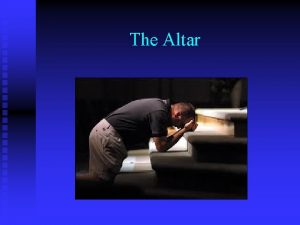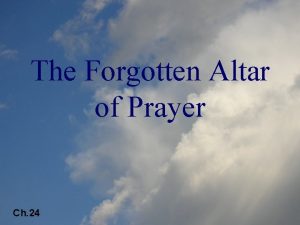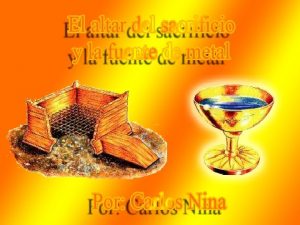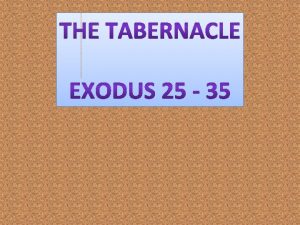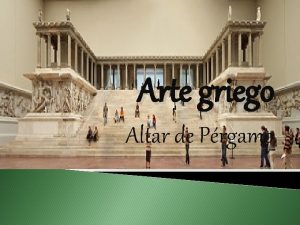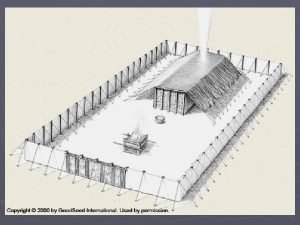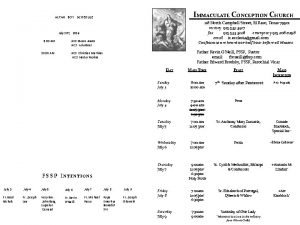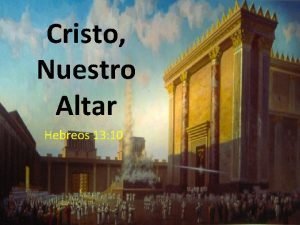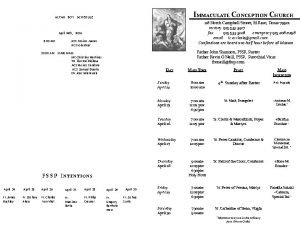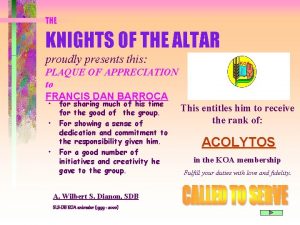The Altar What is an Altar An Altar












- Slides: 12

The Altar

What is an Altar ? • An Altar is a place of prayer or worship of God.

Old Testament Altars • In the Old Testament, an altar is used to be built on the land where you could kindle fire and burn the animal offered in sacrifice. While animals were a common sacrifice in the Old testament, altars were also used to offer grain, fruit, wine and incense. God accepted the aroma from it as the burnt sacrifice ascended to Him. He might then grant the requests of those who had built the altar and offered sacrifices upon it.

New Testament Altars • In the New Testament, an altar is that place of contact with God where Jesus Christ as the ultimate sacrifice puts us right with God and is ever making intercessions for us. As such we do not require any further sacrifice of material things to make atonement for our sins. Christ is the one perfect sacrifice for all.

Where is the Altar located in our Church? • The Altar is located behind the iconostasis reached through the Beautiful Gates or Angel Doors

Within this area is the altar table, which is more often called the holy table or throne; the apse containing the high place at the centre back with a throne for the bishop and the synthronos, or seats for the priests lie on either side. The Chapel of Prothesis on the north side where the offerings are prepared in the Proskomedie before being brought to the altar table. The holy vessels are also stored here and the Diaconicon on the south side is where the clergy and server vestments are stored.

Facts about the Altar • Orthodox Altars are usually square. • Traditionally they have a heavy brocade outer covering that reaches all the way to the floor. • Occasionally they have canopies over them. • All Orthodox altars have a saint's relics embedded inside them, usually that of a martyr. These are installed at the time the Altar Table is consecrated.


• On top of the altar table in the centre toward the rear is an ornate receptacle called the tabernacle or artoforion where the reserved Eucharistic Gifts are stored for the Communion of the Sick. • This is often shaped like a model of a church building. In front of this is placed the Gospel book, which usually has a decorated metal or fabric cover with icons of the Evangelists and / or the Crucifixion and Resurrection. • Under the Gospels is a folded piece of cloth called the eiliton. Folded within the eiliton is the antimension , which is a silken cloth imprinted with a depiction of the burial of Christ and with relics sewn into it. Both these cloths are unfolded before the Offerings are placed on the altar table. • Next to the Gospels may be found the Blessing Cross.

• Behind the altar is a seven-branched candlestick, which recalls the seven-branched candlestick of the Old Testament Tabernacle and the Temple in Jerusalem. • Behind this is a golden processional cross. • On either side of the cross are Liturgical fans which represent the six-winged Seraphim. • Against the wall behind the altar is a large cross. Hanging from the cross is usually a flat iconographic depiction of Christ which can be removed during the 40 days following Easter.


• Traditionally, no animal products other than wool and beeswax are allowed in the sanctuary/altar. • None may enter the altar without a blessing from the priest or bishop, and personal jewellery, such as rings and earrings, are not worn by those serving there, except wedding bands.













